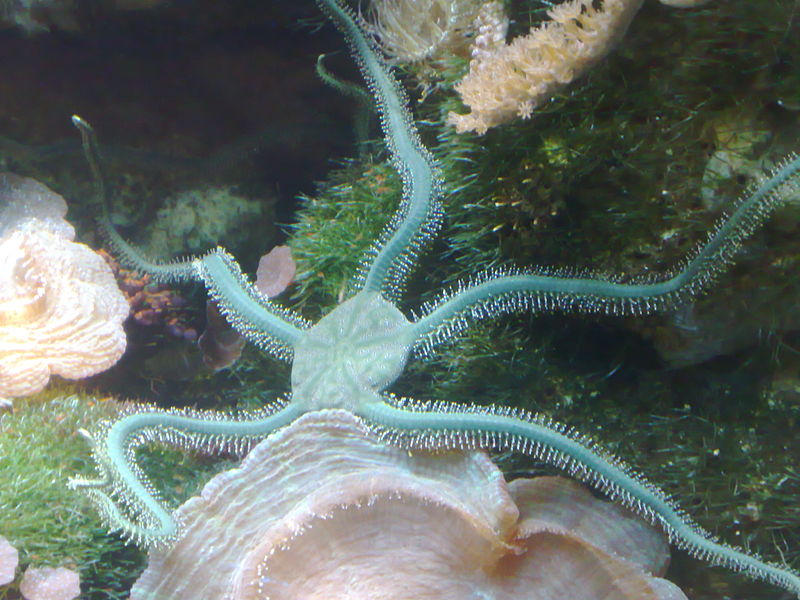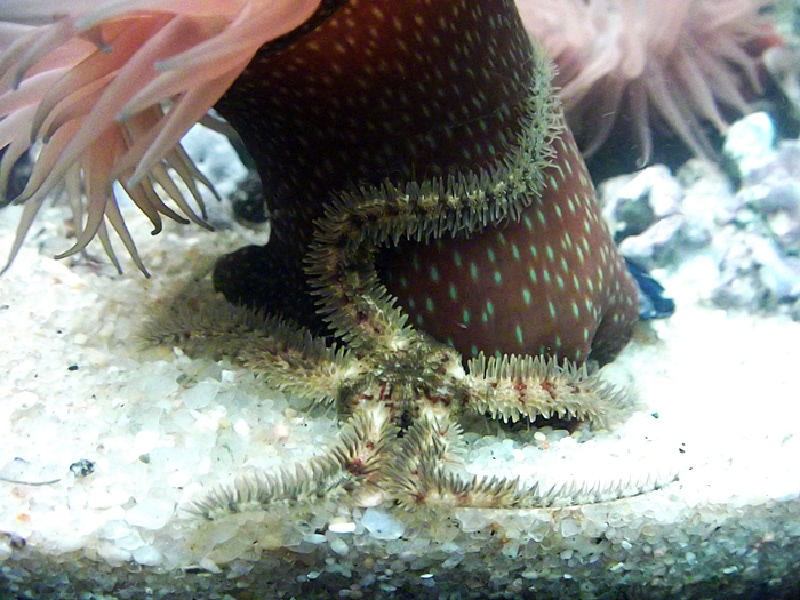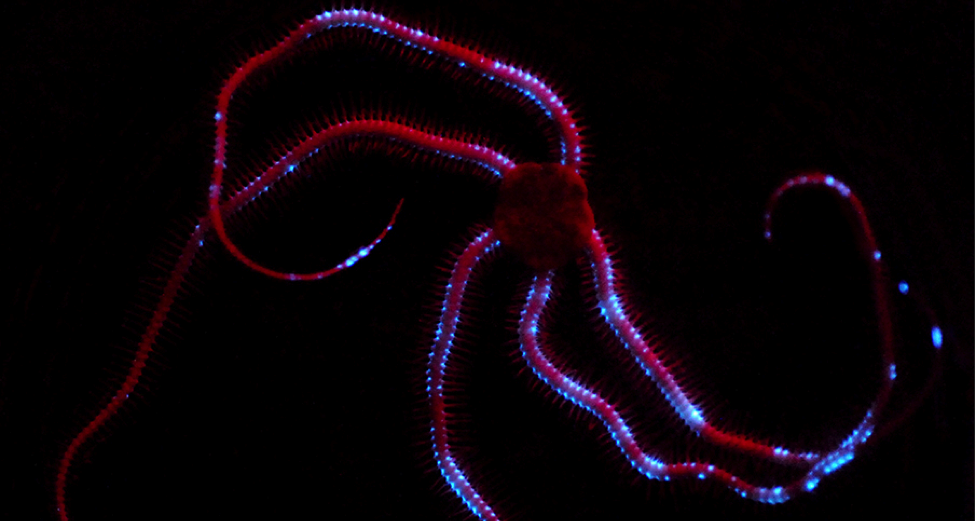Interactions
The Ophiosila riisei brittle-stars are known to live
in heavily populated groupings, which can reach a population
size of over 1000 organisms per m2, making these organisms a
very likely food source for predators functioning at night
(Grober 1988). O. riisei eat all throughout the night
by stretching out its arms into the water to catch food,
revealing over 70 percent of its body. During this time
that the arms are feeding, the brittle-stars are the most
susceptible to predation. This susceptivity could be the reason
for the evolution of bioluminescence in this species (Grober
1988).
O. riisei give off minor and major luminescent flashes. A
minor flash is dim and is caused by a small disturbance and a major is
vivid, goes down the arm and is caused by a more intense disturbance.
The organism will react to a major flash by returning to the crevice in
coral that it lives during the day. These flashes are always due to
disturbances and the bigger the disturbance, the brighter the flash. At
least 70 percent of these luminescent flashes are due to organisms
functioning at night (mostly
crustaceans and sometimes mollusks (such as
squid and
octopus), echinoderms, and
fish) and are known to be predator deterrents (Grober 1987).
Matthew Grober has performed two studies regarding the
bioluminescence of brittle-star and the responses of predators. His
first study on this topic involved three types of nocturnal
crab predators, Portunus serbae, P. spinnimanus
and P. ordwayi and it was the first study to show the
luminescent flashes of O. riisei can be a predator deterrent.
Five trials showed the O. riisei were always less preferred
compared to the control (ophiuroids lacking the bioluminescent
behavior). In fact, the amount of time O. riisei were handled
by predators was five times lower than the other ophiuroids (Grober
1988). The evolution of the bioluminescent behavior is preferred when
predators are hesitant to attack more apparent organisms; predators stay
away from organisms with bioluminescent behavior, after disturbance from
a predator bioluminescent ophiuroids have higher survival rates, and
when organisms are more apparent to predators by a behavior. The results
of Grober positively supported this idea. These results also show O.
riisei contained fewer injuries from the crab predators than the
controlled ophiuroids because of the O. riisei bioluminescent
behaviors. In conclusion bioluminescent behaviors are powerful predator
deterrent and are worth the energy cost (Grober 1988).
Grober (1988) also observed the behavior of many types of reef animals in response to the bioluminescence behavior of O. riisei; similar results were found. Out of 67 different luminescent flash occurrences from O. riisei, only two times did the organism causing the flash move toward the ophiuroid. Another test was done comparing visual and non-visual organism responses to the flashes. Visual predators repeatedly avoided the O. riisei after the flashes and non-visual predators did not show a response (Grober 1987). This study also showed the different responses to the flashes by different types of organisms (predators, scavengers/cleaners, and non-visual organisms). Predators showed 100 percent avoidance, non-visual organisms showed 100 percent no response and scavengers/cleaners showed both. These different behaviors by these organisms could be due to the closeness of this species to the aggregations of O. riisei. Because many predators avoid the aggregations, there is a greater amount of time for feeding and less damage to the O. riisei by other organisms. However, luminescent flashes do not deter against non-visual organisms so there are still some O. riisei that scare to the reef and are damaged by these species (Grober 1987).
To learn some more information about this brittle star, visit our Facts page!
